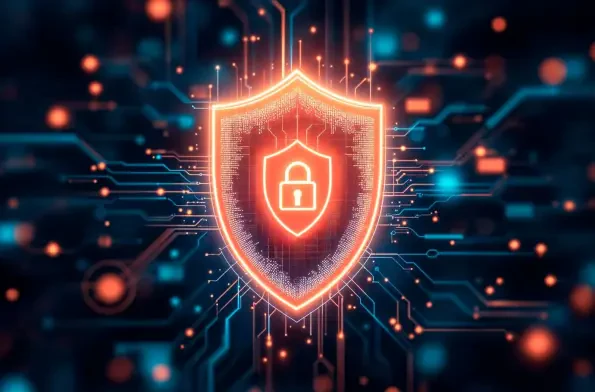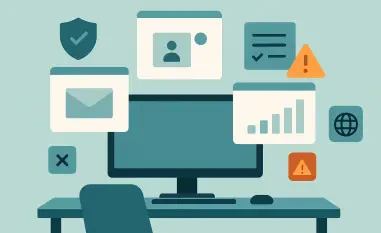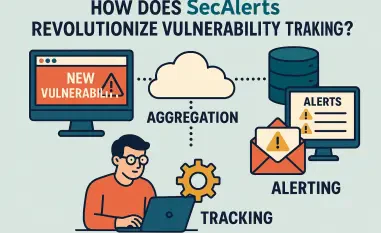In the rapidly evolving realm of enterprise software, the significance of security patches cannot be overstated. SAP’s recent release of critical and high-severity security patches has become a focal point for discussion in the tech community. The June 2025 Security Patch Day update highlighted vulnerabilities, particularly in SAP NetWeaver, emphasizing the need for timely and effective patch management. This roundup delves into expert insights and industry opinions, unraveling the complexities and implications of these recent updates.
Tracing Unseen Vulnerabilities and Their Significance
The revelations in the recent updates underscore a pressing need to address unseen vulnerabilities within SAP systems. Experts unanimously agree that the missing authorization check in SAP NetWeaver’s ABAP application server, referenced as CVE-2025-42989, epitomizes the critical nature of overlooked security flaws. With a daunting CVSS score of 9.6, the potential for attackers to bypass authorizations and escalate privileges poses a severe threat to both data integrity and system availability.
Taking proactive measures against such vulnerabilities goes beyond mere software updates. Prioritizing these patches is seen as imperative for protecting sensitive information and ensuring operational continuity. Failure to address these flaws rapidly could lead to disastrous consequences, reinforcing the importance of security vigilance.
Dissecting the NetWeaver Vulnerability
Unpacking SAP NetWeaver’s Key Issues
Recent focus on SAP NetWeaver reveals vulnerabilities more intricate than initially perceived. Discoveries within the Remote Function Call framework indicate that unauthorized users could exploit missing authorization checks to subtly yet destructively manipulate system settings. Insight from industry leaders points out the necessity of additional permissions to attain comprehensive security, highlighting an often-neglected area in network security practices.
Exploring the Authorization Concerns
Authorization has emerged as a potential weak link, with several professionals suggesting that most breaches exploit such gaps. The inefficiencies in authorization controls within SAP NetWeaver spotlight an area ripe for improvement. To counter this, many organizations are exploring more robust authorization policies, mitigating risks before they escalate into tangible threats.
Evaluating Security vs. Functionality
A lingering debate persists over security and functionality. While SAP’s robust features remain critical for business operations, maintaining equilibrium by securing those features is vital. Balancing robust security measures with functionality is complex yet essential, ensuring that security does not stifle innovation or productivity.
Addressing High-Severity Flaws and Industry Adaptations
Impact of High-Severity Flaws
High-severity flaws described in SAP’s update pose threats beyond immediate surface-level issues. As companies evaluate the broader implications of vulnerabilities like information disclosure and cross-site scripting (XSS) defects, a comprehensive approach to securing application environments becomes evident. Organizations are increasingly emphasizing strategic vulnerability assessments to adapt defenses proactively.
Shifts in Industry Practices
In adapting to these shifts, many organizations are redesigning their security architectures to manage inherent risks. An industry-wide emphasis on cybersecurity awareness ensures that IT departments remain agile in addressing vulnerabilities. Exploring leading practices from peers further enhances the security landscape, fostering innovation in protective strategies.
Strategic Balance Between Risks
A strategic balance between inherent risks and operational effectiveness is pivotal. By closely tracking emerging threats and system vulnerabilities, enterprises aim to deploy patches that safeguard against potential disruptions, maintaining optimal performance and security.
Looking Toward 2025: Emerging Threats and Strategic Challenges
Anticipating Future Threats
With 2025 underway, SAP users encounter new threats and challenges. Industry forecasts suggest that cyber threats will grow more sophisticated, necessitating an adaptive security strategy. Enterprises are urged to preemptively identify emerging risks, ensuring proactive resilience.
Observing Global and Sector Variations
Global security strategies and sector-specific variations offer valuable insights into prevailing threat patterns. By examining these patterns, businesses can customize their defenses, strengthening internal mechanisms aligned with broader security trends.
Critiquing SAP’s Security Measures
Some analysts question whether SAP’s security measures are truly comprehensive. Despite the progress made, potential security gaps might persist, prompting calls for a reevaluation of the strategies in place. While SAP has advanced in counteracting vulnerabilities, ongoing scrutiny of its security frameworks spurs further enhancements.
Role and Insights into Patch Management
Constructive Patch Management and Its Role
Patch management remains a crucial and often unsung force in maintaining security. Regular updates and systematic oversight signify a proactive stance against security breaches, encouraging businesses to rally behind effective management. Some experts highlight gaps in patch management approaches, urging a shift toward prioritizing timely updates in security infrastructure.
Learning from Other ERP Vendors
Examining approaches by other ERP vendors offers comparative insights, enriching the dialogue surrounding effective security strategies. Industry voices frequently emphasize the importance of integrating best practices from various sources to create resilient networks, allowing lessons from diverse ERP environments to inform SAP users’ strategies.
Forecasting Future Security Trends
Projections for future security trends point to the rise of AI-driven analytics and other transformative technologies. By aligning security strategies with these advancements, organizations seek to fortify their networks, preemptively confronting impending cybersecurity challenges.
Key Strategies for Navigating SAP’s Vulnerabilities
Practical Application of SAP’s Approach
Understanding SAP’s security approach sheds light on effective protective measures. By analyzing these strategies, businesses gain insights into optimizing their enterprises against cyber threats. Practical application of these insights helps streamline security protocols, strengthening the overall defense strategy.
Implementing Strategic Security Measures
Strategic guidance calls for taking decisive actions now, prioritizing upgrades, and reinforcing vulnerable areas. Engaging with security professionals, organizations enhance their protocols, ensuring that defenses evolve alongside emerging threats.
Embracing Lessons from Industry Experiences
Applying lessons learned from industry experiences allows organizations to bolster their cybersecurity frameworks. Real-time enhancements to security protocols, influenced by collective knowledge, culminate in more robust protection.
Reflecting on SAP’s Security Landscape
Recognizing the Critical Nature
Reflecting on SAP’s updates underscores their critical nature in the contemporary security landscape. Addressing these vulnerabilities promptly forms the backbone of resilient IT infrastructure. A collective recognition of the necessity for vigilance in patch applications facilitates improved security outcomes.
Envisioning Future Threat Mitigation
Anticipating the evolving threat landscape guides companies in refining their security tactics. Expectation of future exploits fuels innovation in defensive measures, ensuring organizations maintain a competitive edge while mitigating pertinent threats.
Catalyst for Stakeholder Action
These insights catalyze decisive action among stakeholders, compelling a shift from reactive responses to proactive involvement. Encouraging a concerted effort among all security stakeholders inspires a comprehensive, enduring security strategy for the digital age.
In conclusion, the adoption of SAP’s latest security updates is not merely a precautionary step but a strategic maneuver to safeguard organizational assets. Addressing these vulnerabilities with an informed perspective enables companies to navigate this complex landscape proficiently, transforming security challenges into opportunities for robust enhancement.













